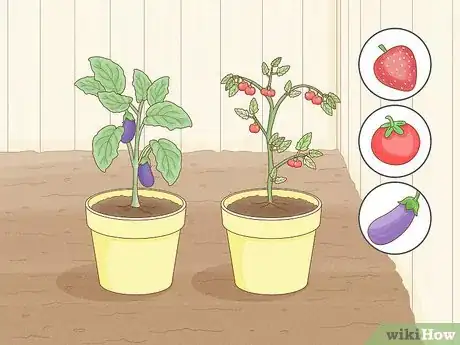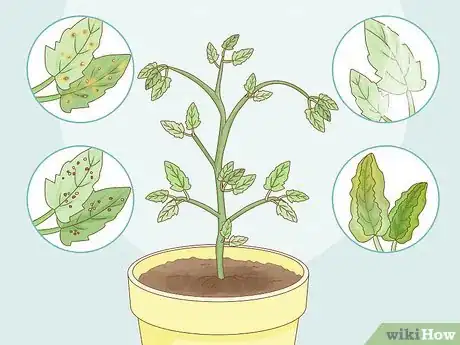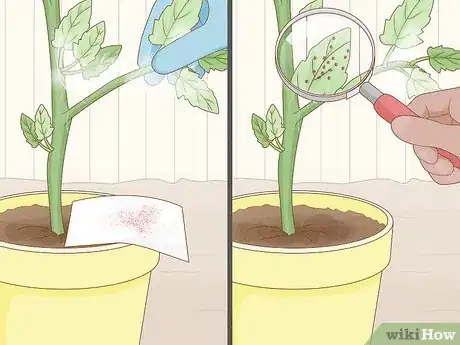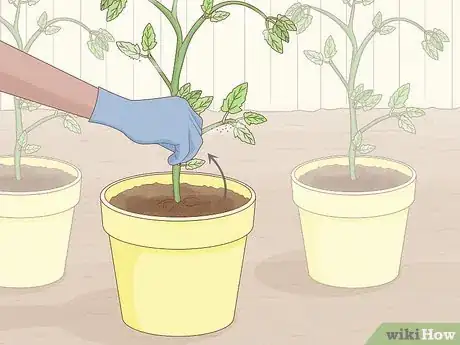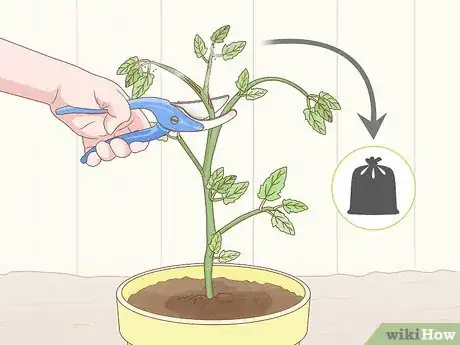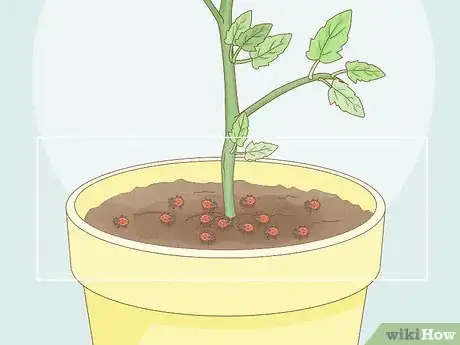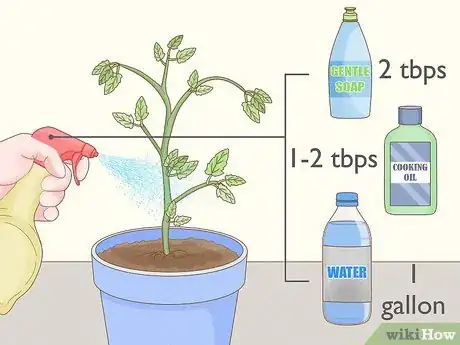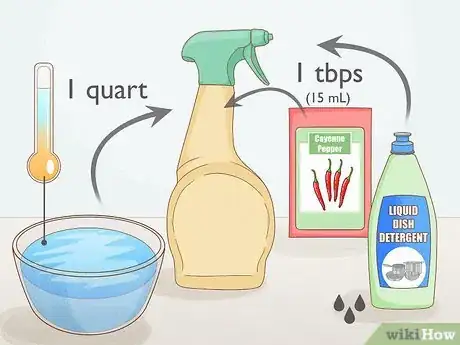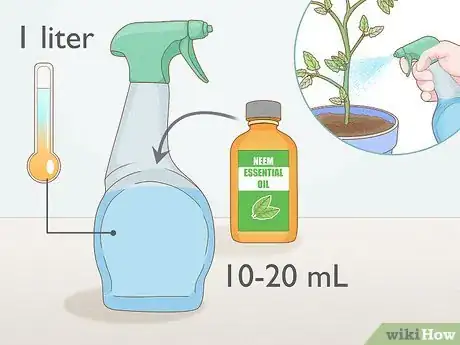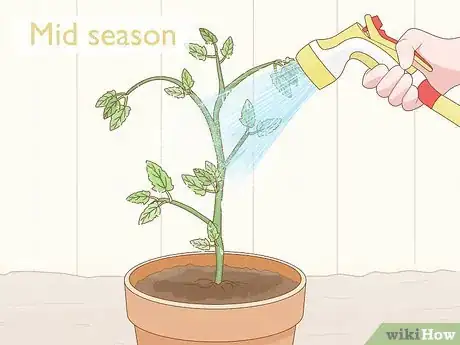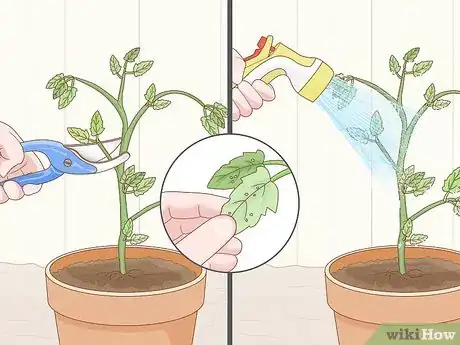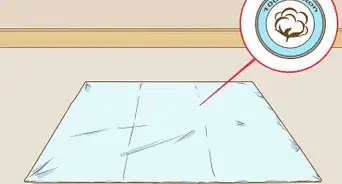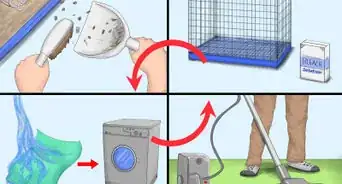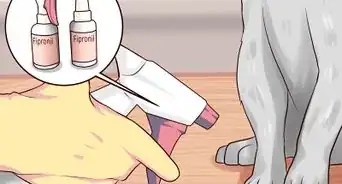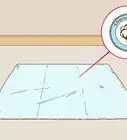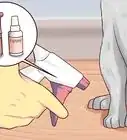This article was co-authored by Katie Gohmann. Katherine Gohmann is a Professional Gardener in Texas. She has been a home gardener and professional gardener since 2008.
wikiHow marks an article as reader-approved once it receives enough positive feedback. This article received 12 testimonials and 85% of readers who voted found it helpful, earning it our reader-approved status.
This article has been viewed 478,732 times.
Spider mites are tiny, sap-sucking pests that can be quite difficult to destroy. Mites cling to the bottom of leaves on many plants, sucking the nutrients out of the leaves, sometimes causing the leaves to dry out and die. Once you've identified an infestation on your plants, spider mites can be destroyed through natural methods, as long as management of the plant is upheld.
Steps
Identifying Spider Mites
-
1Identify plants spider mites are attracted to. Spider mites are attracted to many plants, including indoor and outdoor, with some of those being strawberries, melons, beans, tomatoes, eggplant, pea pods, ornamental flowers, trees, and most houseplants. [1]
-
2Recognize the signs. When checking for spider mites, you'll be able to identify plants they have infested by the state of the plant. Spider mites suck the sap from the plant, which causes damage to its leaves. Some noticeable signs of spider mites are:
- Yellow, tan, or white spots on the leaves
- Very small white or red spots on the leaves that move (these are the spider mites)
- White, cottony webbing that appears on the underside of the leaves
- Eventually leaves may curl up after changing color and fall off
Advertisement -
3Check for spider mites. Before you begin treating spider mites, it's good to be familiar with what they look like and the harm they cause. If you are unable to see them on the leaf, hold the stem of your plant over white paper and gently shake, causing the spider mites to fall on the paper. [2]
- Spider mites are very small, so they can be difficult to see, but with a magnifying glass you will be able to make out a small body with eight legs, and a red, brown, yellow, or green coloring.
- Spider mites are most common in hot, dry and dusty conditions and most prevalent in places where they have no predators, such as plants that have been treated with insecticide. [3]
Treating Spider Mites
-
1Isolate the plant immediately. Before taking any steps to remove spider mites, you'll want to remove the infected plants to an area without any other plants. This will prevent the spider mites from spreading and harming your other plants.
-
2Prune the plant. After removing the infected plant to an isolated area, begin pruning the plant, removing any stems, leaves, or other infested parts of the plant and throw in the trash. Make sure to remove until all webbing is gone. Unfortunately, you may have to remove entire plants to prevent mites from spreading to other plants if the plant is overly infested. [4]
- Make sure to throw leaves directly in a trash bag so they won't spread. Throwing them in your compost pile will allow spider mites to escape to your other plants.
-
3Spray the plant with water. Using a high pressure water hose or nozzle, spray plant generously. This will dislodge spider mites from the plant and kill some of them, reducing the number of spider mites on your plant. If treating an indoor plant, use a wet sponge or take it outdoors to spray. [5]
- This treatment typically has to be repeated in order to effectively remove spider mites.
-
4Introduce natural predators. This is a great step, because allowing natural predators to inhabit your plant will keep spider mite population to a minimum, if not dissolving it completely, and you won't have to worry about spider mites continually infecting your plants. You can purchase these predators from reputable nurseries.[6]
- Ladybugs, lacewing, and predatory mites are the best predators for spider mites
- The best time to release predators is when spider mite levels are relatively low. You'll also want to make sure the predators you purchase are appropriate for the plant you'll be placing them on and for the season in which you'll be using them. [7]
-
5Create a soap spray. Soap sprays are a common, natural way to kill spider mites. Combine two tablespoons of gentle soap, one to two tablespoons of cooking oil, and a gallon of water. Spray plants thoroughly, repeating every four to seven days until spider mites appear gone.
- Gentle soap, such as baby shampoo, may be better because heavier soaps like dish detergent can damage plants. However, you can use a harsher soap as long as you test it on a small area of the plant first, making sure the solution doesn't burn the leaves.
- Cooking oil will smother the insects and help the solution stick to the leaves.
- Be careful not to spray solution on plants when you notice beneficial insects as this will harm them as well, and avoid spraying when the sun is directly on the leaves as it will likely dry up the solution. [8]
-
6Use hot pepper spray. This solution is a common way to control mites and other pests. Combine one teaspoon cayenne pepper or hot sauce, one quart of warm water, and a few drops of liquid dish detergent. Let the solution sit overnight and then sift it through a fine strainer. Spray on the bottom of leaves, keeping it away from your face, and shaking frequently to prevent ingredients from settling. [9]
- Always test solution on a small portion of the plant to make sure it doesn't harm the leaves.
- To make an even stronger solution, add minced onion and garlic.
-
7Spray plant with an oil solution. Many essential oils can help kill and prevent spider mites. These solutions are beneficial because they will not harm the plant itself, and have natural properties that react with the spider mite, often killing it. Mix a solution of these oils in a one liter bottle, filling half of it with lukewarm water and then adding 10 to 20 milliliters (0.34 to 0.68 fl oz) of essential oil. Some oils you might use are: [10]
- Neem oil
- Eucalyptus oil
- Lemon oil
- Cinnamon oil
- Peppermint oil
- Rosemary oil
- Chrysanthemum oil
- Thyme oil
- For oils with a gentle smell, use higher concentrations, and those with a stronger smell, use lower concentrations.
- Never pour essential oils directly onto plant without diluting them first as this will likely damage the plant.
-
8Know the benefits of organic treatment. By using chemical pesticides, you can often kill the insects that prey on spider mites, making it easier for spider mites to grow and populate on your plants. Spider mites have also been known to develop quick resistance to some pesticides, so it's best to control spider mites with natural methods. [11]
- Female spider mites can produce up to 300 eggs continuously over a few weeks. If some eggs are unable to be killed by pesticides, the mite problem may only get worse.
Preventing Future Spider Mites
-
1Always keep plants nourished. Plants that are stressed are more vulnerable to spider mites. Make sure plants are adequately watered, are in healthy soil, and receive optimal light.[12]
-
2Dust plants. Periodically dust the leaves and branches of your plant, as this will help prevent spider mites. In dry, dusty areas spider mites are thirstier and so they will cause more damage to your plant if you provide that environment for them. [13]
-
3Watch for eggs. Just targeting spider mites with one treatment is likely not going to get rid of them completely. During warm weather seasons, eggs are laid continuously, and so management and repetition of treatments is vital to keep spider mite population to a minimum or nonexistent. Do frequent water sprays on your plant, as well as pruning leaves if you notice any eggs (small white specks on the underside of leaves) or mites.[14]
- It may also be beneficial to keep the plant in an area where air can circulate freely.
Expert Q&A
Did you know you can get expert answers for this article?
Unlock expert answers by supporting wikiHow
-
QuestionDo I need to get rid of all my soil?
 Katie GohmannKatherine Gohmann is a Professional Gardener in Texas. She has been a home gardener and professional gardener since 2008.
Katie GohmannKatherine Gohmann is a Professional Gardener in Texas. She has been a home gardener and professional gardener since 2008.
Professional Gardener
-
QuestionWhat do mites look like?
 Katie GohmannKatherine Gohmann is a Professional Gardener in Texas. She has been a home gardener and professional gardener since 2008.
Katie GohmannKatherine Gohmann is a Professional Gardener in Texas. She has been a home gardener and professional gardener since 2008.
Professional Gardener
-
QuestionDo clover mites bite? (tiny red spiders)
 Community AnswerThey do not bite or cause health-related problems, but clover mites can still be a nuisance. If smashed when they crawl over carpets and drapery, the mites leave a red stain. Clover mites can be red, green or brown, and have front legs that are about twice as long as their other legs.
Community AnswerThey do not bite or cause health-related problems, but clover mites can still be a nuisance. If smashed when they crawl over carpets and drapery, the mites leave a red stain. Clover mites can be red, green or brown, and have front legs that are about twice as long as their other legs.
Warnings
- Only move to more toxic solutions or pesticides if your spider mite population is out of control and organic methods don't seem to work.⧼thumbs_response⧽
- When using sprays, always make sure the spray will not harm the type of plant you are treating. Different plants will react differently to solutions so always check a small patch of the plant and try to remove as many mites as you can through pruning and spraying with water.⧼thumbs_response⧽
Things You'll Need
- Water hose
- Disposable gloves to wear when wiping leaves
- Spray bottle
- Essential oils
- Dish detergent or mild soap
- Trash bags
References
- ↑ http://homeguides.sfgate.com/organic-ways-rid-spider-mites-78260.html
- ↑ http://homeguides.sfgate.com/organic-ways-rid-spider-mites-78260.html
- ↑ http://www.planetnatural.com/pest-problem-solver/houseplant-pests/spider-mite-control/
- ↑ http://www.planetnatural.com/pest-problem-solver/houseplant-pests/spider-mite-control/
- ↑ http://homeguides.sfgate.com/organic-ways-rid-spider-mites-78260.html
- ↑ http://www.gardeningknowhow.com/plant-problems/pests/insects/spider-mite-control.htm
- ↑ http://www.planetnatural.com/pest-problem-solver/houseplant-pests/spider-mite-control/
- ↑ http://homeguides.sfgate.com/natural-ways-kill-spider-mites-82854.html
- ↑ http://homeguides.sfgate.com/natural-ways-kill-spider-mites-82854.html
- ↑ http://plantcaretoday.com/7-essential-oils-getting-rid-spider-mites.html
- ↑ http://www.planetnatural.com/pest-problem-solver/houseplant-pests/spider-mite-control/
- ↑ http://homeguides.sfgate.com/organic-ways-rid-spider-mites-78260.html
- ↑ http://www.planetnatural.com/pest-problem-solver/houseplant-pests/spider-mite-control/
- ↑ http://www.planetnatural.com/pest-problem-solver/houseplant-pests/spider-mite-control/
About This Article
To get rid of red spider mites organically, prune off any leaves or stems where you see abundant mites and throw them away to prevent the mites from spreading further. If the mites are more widespread, spray down your plants with a mix of 2 tablespoons of gentle soap, 1-2 tablespoons of cooking oil, and a gallon of water. Another way to remove mites is to spray a mixture of 10-20 milliliters peppermint or lemon essential oil per 1/2 liter of water onto infected plants. For advice from our Horticulturist reviewer on how to identify spider mites, keep reading!
